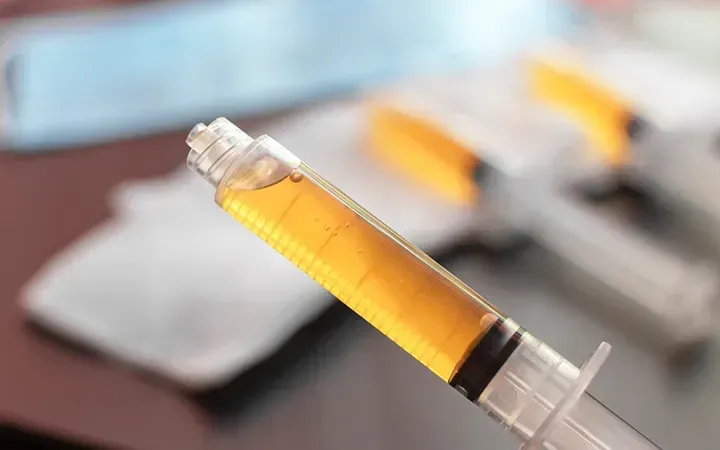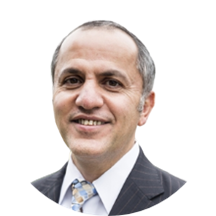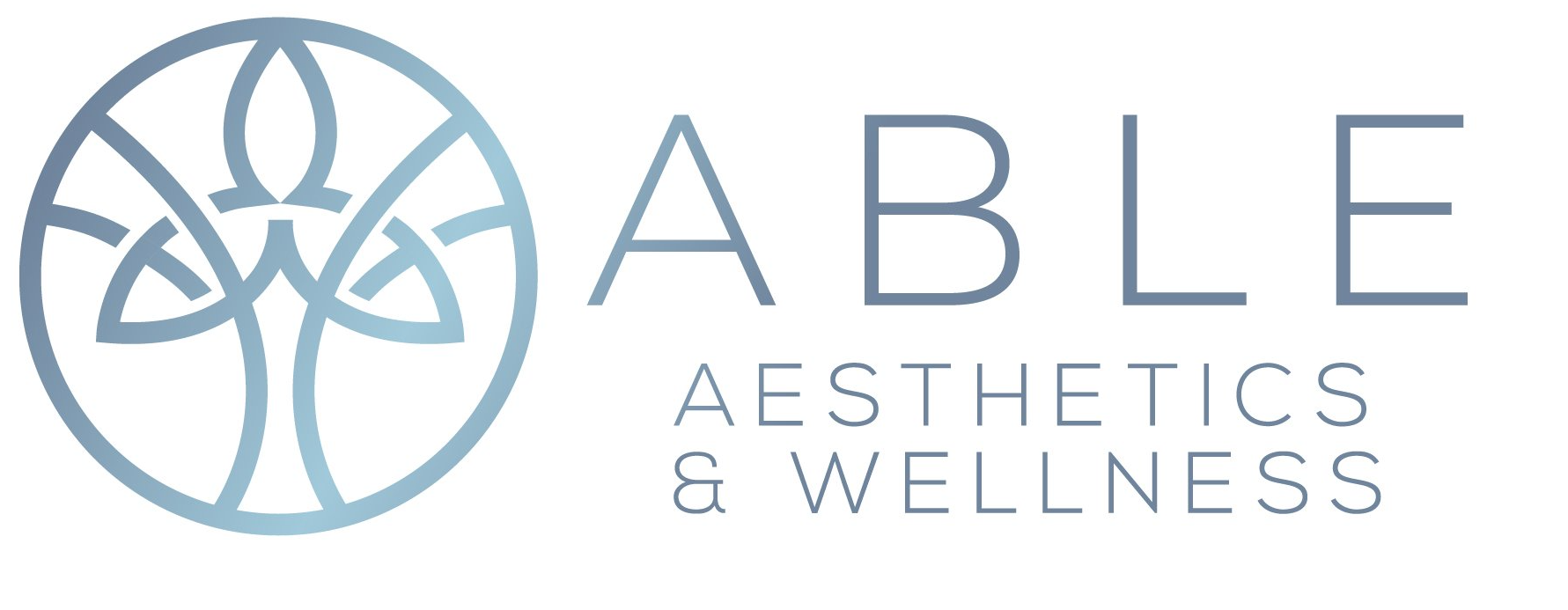PRP Injections
Platelet-Rich Plasma
PRP therapy can help reduce pain and inflammation and promote healing by stimulating the growth of new tissue. This treatment is commonly used for osteoarthritis, tendonitis, and sports injuries. By choosing Able Aesthetics for your PRP therapy, you can be confident that you will receive the highest level of care and achieve the best possible outcome for your joint pain.
PRP Injections for Joint Pain Relief
A lot has been written about platelet-rich plasma (PRP), a substance, and its potential value in the treatment of wounds throughout the past few decades.
Numerous well-known athletes, like tennis great Rafael Nadal and golfer Tiger Woods, have benefited from PRP treatment for a variety of conditions, including damaged knees and persistent tendon ailments. Often, medicines, physical therapy, or even surgery have been used to treat these disorders. Some athletes attribute their ability to return to competition more swiftly to PRP.
Even though PRP has garnered a lot of attention, several unanswered questions remain, including:
What is platelet-rich plasma, exactly?
How does it function?
What ailments are managed using PRP?
Is PRP therapy successful?

Are you suffering from joint pain? You don't have to. Contact Able today for PRP therapy and live pain-free. Call us at 718-891-3977 or fill out our form for a callback. Contact us
What Is (PRP) Platelet-Rich Plasma?
Even though the majority of blood is a liquid, known as plasma, it does have some minute amounts of solid components (red cells, white cells, and platelets). Platelets are probably most well-known for their role in the process of blood clotting. On the other hand, platelets also contain hundreds of proteins known as growth factors, which play a significant role in the recovery process after an injury.
Platelet-rich plasma, or PRP, is plasma that contains a significantly higher concentration of platelets than is generally present in blood. It is possible for the quantity of platelets, and consequently the concentration of growth factors, to be anywhere from five to ten times higher (or more abundant) than it would normally be.
It is necessary to obtain blood from a patient before beginning work on a PRP preparation. During the process known as centrifugation, the platelets are separated from the other cells in the blood, and their concentration is increased, all while the blood is spun down to a lower volume. After that, these platelets are put into the area that was wounded.

Are you looking for Energy Healing in Queens or the Greater New York Area? Book an Appointment at Able Aesthetics today
How Does PRP Platelet Rich Plasma Work?

Laboratory research has revealed that the higher concentration of growth factors in platelet-rich plasma (PRP) may speed up the healing process. Nevertheless, the specific mechanism by which PRP works is not entirely known.
The PRP preparation is applied to the injured area in an effort to hasten the healing process. You can accomplish this goal in one of two ways:
- The wounded area can receive a PRP injection that has been carefully administered. One ailment known as Achilles tendinitis causes the heel cord to swell, become inflamed, and cause excruciating pain. This illness is most frequently observed in runners and tennis players. It is possible to inject directly into this inflammatory area a solution consisting of PRP and a local anesthetic. After the procedure, the patient may experience increased discomfort at the injection site for the first week or two. It may be many weeks before the patient notices any positive effects of the medication.
- PRP may also improve healing after surgery for some injuries. An athlete who has torn their heel chord, for instance, may require surgery to restore the tendon to continue competing. If platelet-rich plasma (PRP) therapy is applied to the site of injury while tendon repair surgery is being performed, there is a chance that the tendon will heal more quickly. To accomplish this, the platelet-rich plasma (PRP) must first be prepared in a unique manner that enables it to be sewn into the damaged tissue.
Prp Injections and Its Uses in Orthopedics
Platelet-rich plasma, also known as PRP, is a material that, when injected into the body, increases the body's natural ability to heal itself. Plasma is a component of blood that helps the blood clot because it includes certain components or proteins that are essential to the clotting process. In addition to that, it has proteins that encourage the expansion of cells. PRP has been created by medical professionals and scientists by extracting plasma from blood and then concentrating it.
Injections of platelet-rich plasma (PRP) have the primary objective of promoting healing and stimulating the growth of new, healthy cells in the body. Injections of platelet-rich plasma (PRP) are frequently utilized in orthopedics as a treatment for joint pain and other bone ailments. In spinal fusion procedures, it is employed to encourage the production of new bone.
PRP treatment is mostly utilized in the repair of:
• Damaged cartilage
• Tendons
• Ligaments
• Muscles
• Bones

Meet Mehran Manouel, MD, FAAOS
As a board-certified orthopedist with over two decades in practice, Mehran Manouel, MD, FAAOS, is a trusted practitioner.
Have Questions? Email Dr. Sepi
Injections of platelet-rich plasma (PRP) are used to treat a variety of common ailments, including the following:
• Knee discomfort or osteoarthritis of the knee
• Pain in the Achilles Tendon
• Tendonitis of the Rotator Cuff
• Pain in the Elbow
• Patellar Tendonitis
• Plantar Fasciitis
The following are the processes for getting platelet-rich plasma (PRP) Injections:
• Platelet-rich plasma (PRP) is exclusively extracted from the patient's blood. After having the blood removed from a vein in the patient's arm, it is then placed in a centrifuge. This device is a centrifuge that spins at a faster pace in order to separate the various types of blood cells.
• The injured area, such as the knee, hip, elbow, or ankle, receives an injection of the platelet-rich part of the blood that was removed from the patient by the physician.
• Platelet-rich plasma (PRP) does not just contain platelets in the concentrated layer of the "spun" blood; it also contains other critical growth factors including plasma and some red blood cells. This is because platelets are found in the layer that is concentrated after the blood is "spun."
Procedures for injecting Platelet Rich Plasma (PRP):
• Platelet-rich plasma (PRP) injections are administered right after isolated platelets.
• An experienced orthopedic surgeon uses the patient's blood to make a PRP injection for the patient. Generally speaking, the process takes about half an hour.
• Some orthopedists add an activating substance to the platelet injection, such as thrombin or calcium chloride, whereas others only inject platelets. It is possible for damage to bones and soft tissues to recover more quickly because of the highly concentrated platelets found in PRP.
• A needle containing platelet-rich plasma (PRP) is inserted into the injured area under the guidance of ultrasound equipment. This enables the doctor to target the damaged tissue specifically and assist the body in its healing process.
• Platelet-rich plasma therapy involves injecting PRP directly into the joint affected by osteoarthritis. This is done by a medical professional.
• While most orthopedic doctors only give their patients one PRP injection, certain patients require several injections spread out over many weeks.
PRP therapy for the treatment of orthopedic problems primarily aims to:
Pain reduction
• To enhance joint functionality
• To prevent, stop, or even repair cartilage deterioration
One of the most cutting-edge treatments for any difficult orthopedic disease is platelets rich plasma (PRP). Mild soreness and edema are side effects that may occur after the PRP injection. As directed by the doctor, patients can get back to their regular routine. This makes PRP therapy totally safe and successful, bringing about exhilarating changes for the patient's future.


